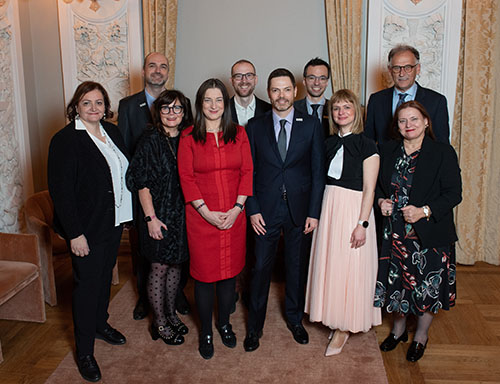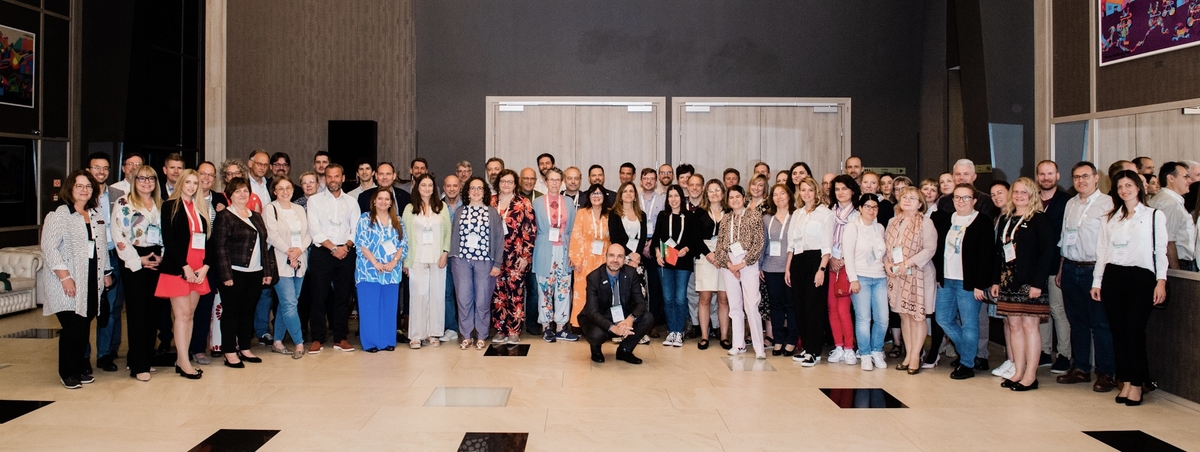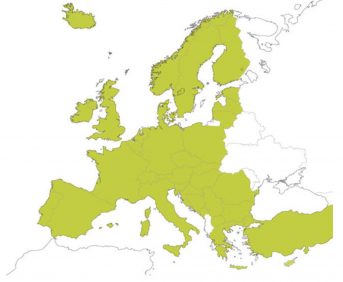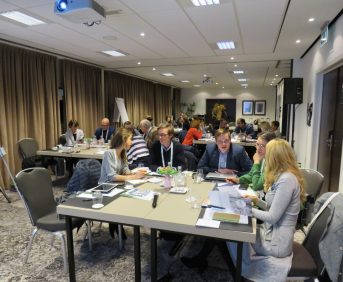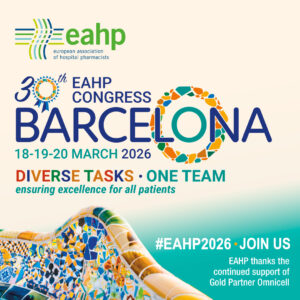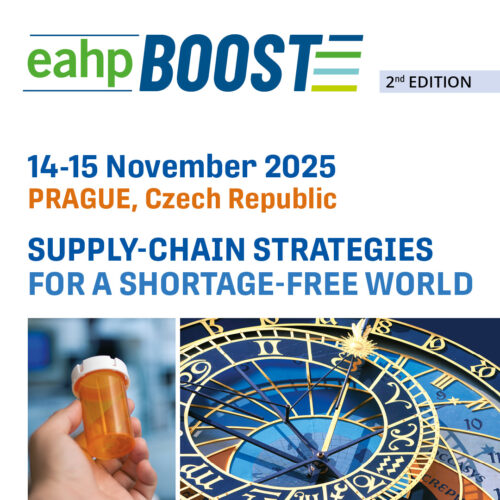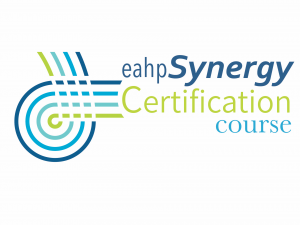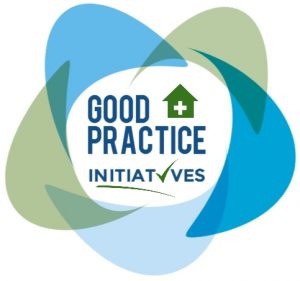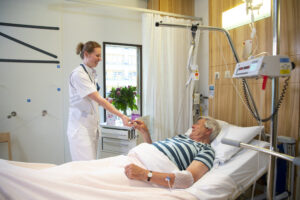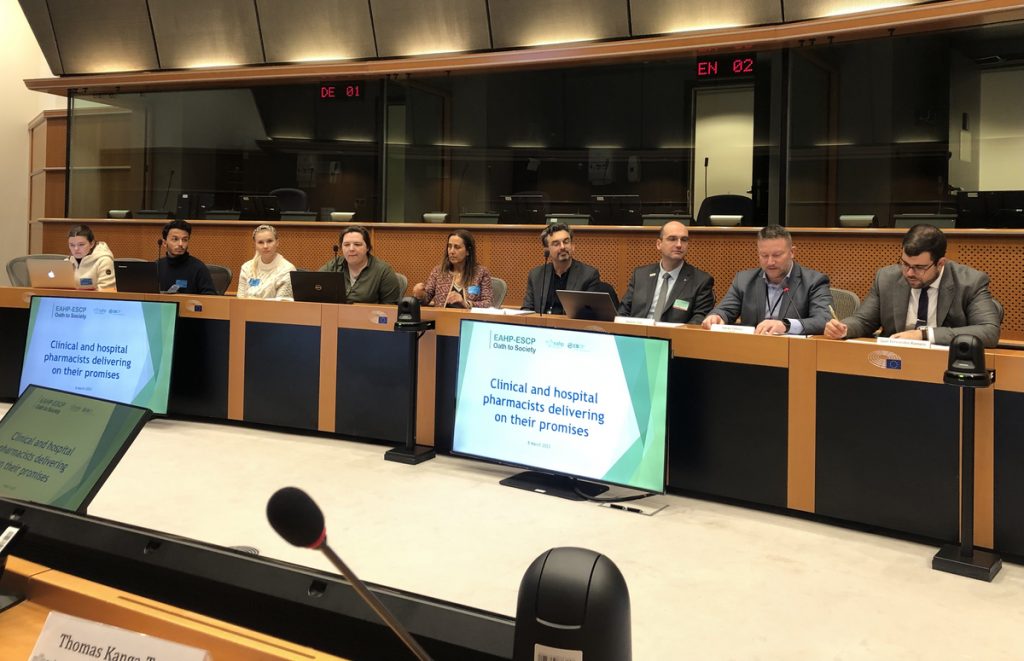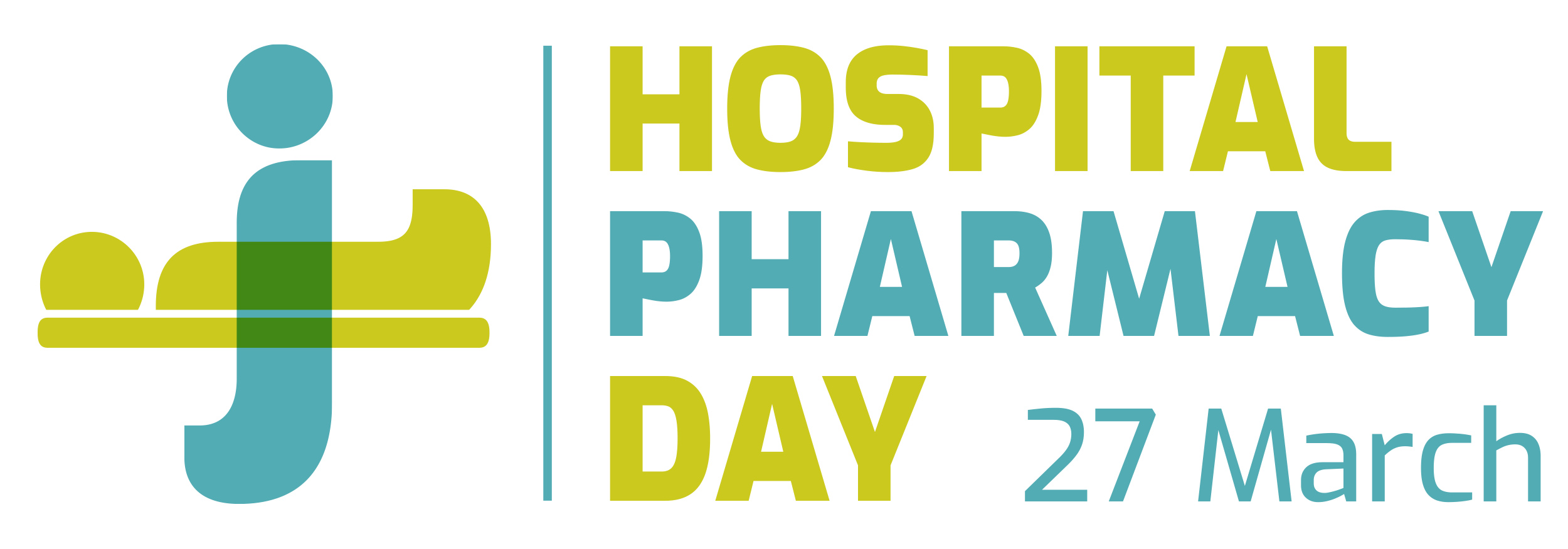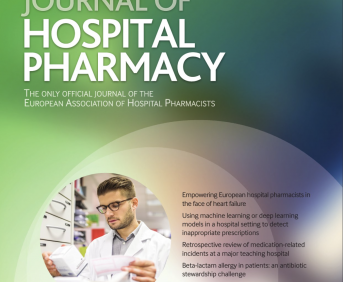IMPLEMENTATION OF ANTIMICROBIAL STEWARDSHIP PROGRAMS SOFTWARE APPLICATION
Pdf

European Statement
Clinical Pharmacy Services
Author(s)
A. ALENTADO MATEU 1 , L. ALVAREZ ARROYO 1 , R. MARTINEZ GOZALBEZ 2 , O. PEREZ OLASO 3 , R. LIMÓN RAMIREZ 4, B. MONTAÑÉS PAULS 1 .
1 HOSPITAL UNIVERSITARIO LA PLANA, FARMACIA, VILA-REAL, ESPAÑA.
2 HOSPITAL UNIVERSITARIO LA PLANA, INFORMÁTICA, VILA-REAL, ESPAÑA.
3 HOSPITAL UNIVERSITARIO LA PLANA, MICROBIOLOGIA, VILA-REAL, ESPAÑA.
4 HOSPITAL UNIVERSITARIO LA PLANA, MEDICINA PREVENTIVA, VILA-REAL, ESPAÑA.
Why was it done?
For years, Antimicrobial Stewardship Programs (ASP) teams have been working to improve the quality of antimicrobial prescription by optimizing treatments, controlling bacteremia and managing infections caused by resistant or difficult to treat microorganisms.
It is essential to have a software tool that allows real-time monitoring of both treatments and certain cultures.
What was done?
The ASP team, in collaboration with the information technology unit designed, developed and implemented a computer application at our center to support the ASP team. This application screens inpatients, searching for any of the predefined parameter alerts based on the type of antibiotic prescribed, the microorganism causing the infection, positive blood cultures or patients who are difficult to manage.
How was it done?
This alert system is based on the integration of the various hospital clinical information systems. Admitted patients are selected after a medical prescription of certain predefined antibiotics (carbapenems, daptomycin, linezolid, piperacillin/tazobactam, ceftazidime/avibactam, etc); these data are obtained from the electronic prescription programme (Athos-Prisma®). Microbiological criteria (Gestlab@ programme) include multi-resistant microorganisms (Escherichia coli, Methicillin-resistant Staphylococcus aureus), positive blood cultures, Pseudomonas, etc. Based on clinical criteria, patients who are difficult to manage can be manually included in the computer programme, mainly by the internal medicine and intensive care unit departments. The antimicrobial and microbiological criteria are dynamic and can be modified as needed.
What has been achieved?
From June 1 st 2023 to February 1 st 2024, 300 different patients have underwent interventions. In the patient’s electronic medical record from the ASP application, 355 ASP recommendations were made for 236 patients. ASP interventions included recommended isolation measures (242), modifying or suspending antibiotic treatment (68), maintaining adequate antibiotic treatment (22), initiating antibiotic treatment (11) and requesting complementary tests (12), such as imaging, cultures or serology.
What next?
This application is a fundamental communication tool for ASP teams allowings different recommendations for optimizing antimicrobial treatment to be made in the application. It automatically generates a note in the patient’s clinical history, making it accessible to all healthcare professionals and allowings for easy extrapolation to other hospitals, enabling its implementation in daily clinical practice.
ENHANCING PROFESSIONALISM IN CLINICAL PHARMACIST SERVICE THROUGH DIGITAL COMMUNICATION
Pdf

European Statement
Clinical Pharmacy Services
Author(s)
Mia Pavelics Rehn
Trine Rune Høgh Andersen
Why was it done?
Clinical Pharmacists (CPs) in the Region Zealand Hospital Pharmacy (30 CPs) are scattered over great geographical distances on multiple hospital wards. When working with Clinical Pharmacist Services (CPS), usually just one CP is present per ward. All 30 CPs have different knowledge, seniority and specialization. To enhance the professionalism of the individual pharmacist on duty, digital communication such as chat functions are implemented for quick and easy intra-pharmacist consults.
What was done?
The ward physicians and nurses experience the combined specialty knowledge of 30 CPs from each CP when engaging CPS. This is highly relevant to maintain the position of having CPS through the hospital pharmacy instead of employing one individual CP directly on the ward, which has become more common over recent years.
How was it done?
To illuminate how the CPs from the hospital pharmacy share knowledge by using each other in their clinical operation, data was collected during three weeks of daily work. The CPs at 10 department wards registered each time they consulted a CP colleague. Furthermore, they recorded what type of communication they used (Microsoft Teams®, telephone or face-to-face) and what the inquiry was about. Written communication in Teams chat was saved for qualitative analysis.
What has been achieved?
The collected data illustrate the utilization of collective knowledge. In the three weeks 34 consults were made using primarily Microsoft teams. In 9 cases the contact was face-to-face and in 6 cases by phone. Most common was pharmacological discussion about specific cases during medication reviews (23), followed by questions about technical issues in the electronic patient record (11), general professional discussions (7) and consults about medication shortages and alternatives (8).
What next?
This initiative illustrates how using easy and available digital communication such as Teams chat functions across geographical distances will increase professionalism and harness the collective knowledge of many CPs working in collaboration for the benefit of improved CPS.
THE USE OF A DIGITAL DISCHARGE REPORT PROVIDING INFORMATION ON DISPENSED MEDICATION TO IMPROVE THE INTERFACE BETWEEN SECONDARY AND PRIMARY CARE
Pdf

European Statement
Clinical Pharmacy Services
Why was it done?
In the home care team (HTC), it is often assistants, who may be unskilled workers, that administer the medication from a multi-dose compliance aid. The quality control they perform before administration involves verifying that the number of tablets and capsules for the designated time slot matches what is recorded in the HTC’s digital system.
The hospital may not have all the strengths in stock, and therefore a dose can be composed of multiple or fewer tablets.
If the number of tablets deviates from the HCT’s digital system, the assistant is not allowed to administer the medicine and must call on a nurse to make sure that the hospital has dispensed the correct medicine.
This is time consuming for the HCT and the patient may receive their medicine at a later time than prescribed with consequent health effects. Furthermore the phone call between the assistant and the nurse can be worrying for the patient to hear.
What was done?
Communication with the local HCT regarding deviations from the medication list was enhanced through the use of an existing digital discharge report (DDR).
How was it done?
A DDR was already in place, and the enhancement is that nurses and pharmacy technicians now use it to report any changes in the number of tablets and capsules dispensed when discharging a patient to the HTC. A nurse from the HTC then adjusts the quantity of tablets in the HTC’s digital system based on the number of days for which the hospital has dispensed medication to be administered by the HTC.
The implementation was initiated on May 1st, 2024, in two hospital wards.
What has been achieved?
It is not technically feasible to generate a report of all the DDRs where this improvement has been implemented; however, the HCT has indicated that each time deviations are noted in the DDR, they will save a significant amount of time.
What next?
If a DDR is available and the hospital wards and clinical pharmacy department can reach an agreement on its usage and timing, there is no reason not to utilize it, especially if it can enhance patient safety during transitions in care.
Digitization: a key to improve health condition of patients with cancer disease
European Statement
Clinical Pharmacy Services
Why was it done?
the app was developed in order to improve therapeutic adherence, pharmacological counseling, management of adverse events and increase pharmacovigilance’s reports with higher data quality. The World Health Organization recognizes that 20% of health is due to medical care, 20-30% to lifestyle, while the remainder depends on the environmental, social, genetic and psychological conditions of the individual. The goal of this app is to improve patient’s therapeutic path at different levels and breaking down geographical barriers.
What was done?
the Sars-cov-2 pandemic entailed a lot of new challenges for the Hospital pharmacist . As the scenario was completely new, it was developed an app to better manage patients with cancer disease treated with oral chemotherapy.
How was it done?
Patient has been divided into two groups, of which only one group use the app to manage the therapy. The primary endpoint was the improvement of therapeutic adherence, while the secondary endpoints are: improve in the quality of patient life (HRQoL), increase pharmacovigilance’s reports and avoid therapeutic errors.
What has been achieved?
The continuous dialogue between patients and hospital pharmacist througt system’s online messaging app improved the management of patients needed and reduce drug interactions. Digital management led to a 56% increase of pharmacovigilance reports. It was also detected a reduction in overall costs and patient uneasiness.
What next?
the health system has to be reorganized around patient’s needed, by promoting the use of more and more homogeneous, safe, transparent and accessible technologies.
Regulatory authorities should accelerate the adoption of digital solution. In this new framework hospital pharmacist will play a key role in the development of value based medicine and in the process of treatment humanization as a patient’s landmark person too.
WEB DIALOGUE: ONE MORE STEP IN TELEPHARMACY
Pdf

European Statement
Introductory Statements and Governance
Author(s)
ARDIZONE BEATRIZ, MARTA HERNÁNDEZ SEGURADO, MARÍA FORTE PÉREZ-MINAYO, LAURA GARCÍA JIMÉNEZ, ELENA TORTAJADA ESTEBAN, ANA CORDERO GUIJARRO, NATALIA BARRERAS RUIZ, LAURA JIMÉNEZ NAVARRO, JAVIER BÉCARES MARTÍNEZ
Why was it done?
First, we had a high number of patient inquiries by phone and by email. Furthermore, patient queries related with their treatment and their resolution were not recorded in the electronic clinical history. Finally, we needed a communication platform that would guarantee personal data privacy.
What was done?
In collaboration with the IT department, we developed a software tool called “Web Dialogue” within the e-health portal of our institution. This tool allows the patients to communicate with the pharmacist using a chat box where they can write queries about drug interactions, adverse effects and any questions about the hospital dispensing treatments, as well as other medications and herbal products. A pharmacist answers the queries within 24 hours, from Monday to Friday.
How was it done?
We asked the IT department to activate this tool for all active patients to whom we dispensed medication in our service (a total of 8000 patients). The development lasted 2 years (2017-2019), but it was not until March 2020, with the start of the COVID-19 pandemic, that the “Web Dialogue” began to be used by our patients more widely. We also made an informative video that was posted on the e-health portal in order to achieve a wider knowledge of this tool among patients. See link: https://www.youtube.com/watch?v=_Z9pd93sNY8
What has been achieved?
The median number of messages per month in 2020-2021 was 202 (IQR= 100,5; 468). At the beginning of the state of alarm in Spain there was a peak in the use of the “Web Dialogue”, mainly to query about how to access the medication (94% of the queries). Over the following months, the proportion of these consultations decreased and consultations regarding doubts about treatment, adverse effects and drug interactions increased. Furthermore, the Net Promoter Score (NPS), an indicator that allows us to measure the satisfaction of patients, shows that in the last year we have achieved, for the first time, a score over 60, which is considered excellent.
What next?
Some of our ideas for the future are: the possibility of selecting the type of inquiry and the interlocutor by the patient, creating algorithms for the automatic response of certain questions and carrying out Big Data research studies.
DEVELOPMENT OF AN INTERACTIVE PLATFORM FOR PROVINCE CLINICAL PHARMACEUTICS WHO ARE IN CHARGE OF THE TREATMENT OF HEPATITIS C INFECTED PATIENTS
Pdf

European Statement
Clinical Pharmacy Services
Author(s)
S. Jornet Montaña, M. Martín Marqués, P. Jolonch Santasusagna, M. Juan Aguilar, C. Gomez Blanco, P. Salvador Collado
Why was it done?
The constant development of new therapies against hepatitis C and the lack of experience in their management requires health professionals to work together.
What was done?
An online platform was created to make inquiries, resolve doubts and establish a shared database among clinical pharmaceutics within the province.
How was it done?
Meetings of the provincial pharmaceutical association were conducted to jointly identify shared necessities across professionals and to determine the best communication system to be used in terms of efficiency, speed and reliability.
What has been achieved?
The pharmaceutical association created an interactive platform, which was easily accessible from a virtual campus. The platform eases the tasks of sending inquiries and comments about side effects to all pharmaceutical professionals in the system, simultaneously and in a timely fashion. This platform also allows the creation of debate forums to answer questions, and promotes knowledge sharing among participants. As time goes by and based on experience of new drugs, a drug interactions database is created. The platform also allows knowledge of whether specific combinations of drugs have been used and the hospital’s own experience, even if no official studies exist. In addition, the platform allows updating the previously introduced interactions and shows who has done it, so this participant can be asked if necessary. This system also allows the sharing of written information, such as patient brochures, recommendations, bibliography and scientific society links and other websites of interest.
What next?
The created platform meets the pharmaceutical participants’ expectations and allows equal treatment of all patients independently of the hospital where they are located. This platform allows professionals to work together for the same cause and overcome individual knowledge and resources constraints. This platform will be used for other illnesses for which special pharmaceutical attention is required. Finally, the platform will be expanded by inviting other provinces to join our project.
